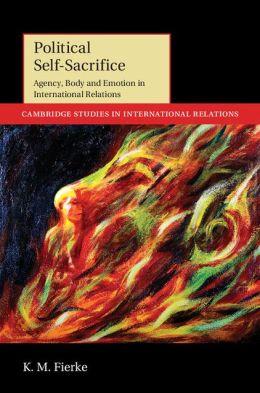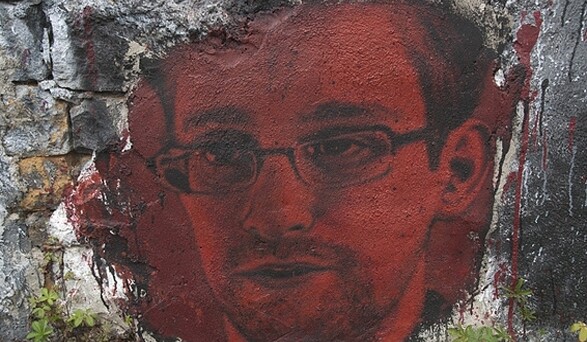 Political Self-Sacrifice: Agency, Body and Emotion in International Relations, K. M. Fierke (New York: Cambridge University Press, 2013), 281 pp., $95 cloth.
Political Self-Sacrifice: Agency, Body and Emotion in International Relations, K. M. Fierke (New York: Cambridge University Press, 2013), 281 pp., $95 cloth.
What could we learn from examining suicide bombing, self-immolation, or hunger strikes not through the lens of state security but from the position of those individuals who use such acts to achieve normative change? In addressing this question, Political Self-Sacrifice brings what seem like senseless acts of desperation into focus as strategically intelligible and culturally meaningful techniques of resistance. By disentangling the logic of “political self-sacrifice,” K. M. Fierke offers an important and timely account of the political strategies, cultural meanings, and normative aspirations associated with those participants in international affairs who, as she puts it, “play with a weak hand” (p. 8).
The book breathes new life into historical cases and, through them, acquires analytical leverage over contemporary topics such as suicide bombing/martyrdom. The core chapters of the book examine hunger strikes in Northern Ireland, nonviolent resistance and martyrdom within Poland’s Solidarity movement, the use of self-immolation to challenge American involvement in Vietnam, and more recent protests in the Middle East and North Africa. In each case, Fierke locates a logic behind acts of self-sacrifice and then investigates their impact on prevailing forms of authority. Assiduously refusing to impose abstract standards of what normative agency does or should look like, Fierke traces the social and cultural processes that actually give meaning to acts of self-sacrifice in practice.
Fierke’s conceptual apparatus centers on the idea of self-sacrifice as a game with its own internal rules. Actors deprived of sovereignty and subjected to humiliation eventually regard individual lives as less important than the broader political objective of “changing the rules of the game” (p. 71). An act of self-sacrifice seeks to align the suffering of the individual with the plight of some aggrieved community. As these spectacles are publicized, they have the potential to catalyze an alternative game, in which “suicide” is recoded as “martyrdom” and the regime’s legitimacy is undermined.
For its part, the established regime confronts what Fierke calls a “warden’s dilemma”: perpetuating repression risks fomenting acts of martyrdom, while engaging with the subjugated endows them with legitimacy and concedes the regime’s own criminality. A key contribution of Political Self-Sacrifice lies in its tracing of the way acts of self-sacrifice achieve political impact by adjusting the terrain of legitimacy on which various forms of political authority must engage. In such environments, prison wardens, political leaders, and other elites still engage in strategic decision-making, but they do so against a much altered baseline of public support.
Fierke’s case studies show how the rise of political self-sacrifice has been facilitated by globalized communications technologies. She notes that the practice generally takes on meaning from historical traditions—for example, by activating memories of some sacrificial act from the community’s past. But she is also clear that the contemporary practice of political self-sacrifice has its own distinctive properties, as these acts only achieve political impact through technologies capable of raising their public profile.
This trend reached its most sophisticated form in the use of various digital technologies during the Arab Spring. But as early as the Vietnam protests of the 1960s, media coverage of Thich Quang Duc’s self-immolation on the streets of Saigon allowed that practice to ripple out to concerned Americans—notably Norman Morrison, the Baltimore Quaker who emulated Duc’s protest outside the Pentagon in 1965. Through media-circulated images, the suffering of one human body resonated with the suffering of another to create a distributed, experimental, and potent form of political contestation. Fierke thus demonstrates how media transmissions allow globally dispersed audiences to be affected by otherwise local instances of bodily suffering.
The book is well attuned to the element of contingency surrounding self-sacrifice. Because the practice relies on media-circulated images of suffering, and because the latter have different effects in different geographic and cultural settings, the impact of self-sacrifice is especially difficult to predict in advance. Self-sacrifice functions as a call to action, but there are no guarantees the call will be answered—and where it is, no formula dictating how. Fierke explains, for example, that while the Tunisian Mohammed Bouazzizi may have intended his December 2010 self-immolation as an act of protest, “there is no reason to think that he would have envisaged, or even imagined, either the copycat self-immolations or the political avalanche that followed” (p. 220). As evocative acts of sacrifice are transmitted by globalized media, their authors do not control the cultural meanings and social imitations those acts inspire.
It is evidence of the book’s success that it raises so many important and searching questions—for example, how do self-sacrificers step outside the structures of authority they inhabit? How and why do certain acts of resistance become “game changers” while others fail to take hold? And how do the meanings attributed to an act of self-sacrifice change as that act is transmitted to different settings? Fierke addresses each of these questions without purporting to offer the final word on any. She demonstrates the need for a situational approach that traces not just the connection between intentional agents and outcomes but also those empirically variable intervening factors—such as ambiguous images, unexpected imitations, or anachronistic memories—that make self-sacrifice an act of creativity rather than one of formula.
One question warranting further attention concerns how the use of self-sacrifice over time alters public receptivity to it. Fierke notes that contemporary “suicide bombing” has become so routine that it no longer attracts attention, and for this reason proposes to examine historical cases in which the social dynamics of self-sacrifice are more evident. But this rationale only highlights the need to determine whether repeated use of self-sacrifice induces something akin to compassion fatigue, and to understand howeven seemingly “primal” (p. 11) responses to the suffering body can be shaped by rival narrativizations seeking to discredit the self-sacrificial act.
Another question concerns the relationship between self-sacrifice and the sacrifices made by soldiers on behalf of the state. Fierke notes that while “the latter is defending that which has already been attained . . . the former is attempting to reclaim that which has been lost” (p. 235). It seems striking, however, that self-sacrifice has become a potent political practice during the same historical period when states have faced, through media coverage, pressure to remove soldiers from harm’s way. Did the wars of the twentieth century, by sensitizing publics to human suffering, lay the groundwork for moral concern over individual acts of self-sacrifice? Or did the latter simply become more visible as state-sanctioned sacrifice has declined, or as communications technologies have exceeded state control?
Political Self-Sacrifice will speak to a wide range of scholars interested in normative contestation in international affairs. It demonstrates how acts of and on the human body—often assumed to be either morally dubious or politically inconsequential—can inspire the claims of a political community and potentially spark realignments at the systemic level. Fierke reminds us that seemingly small acts can have big effects.
—ANDREW A. G. ROSS
Andrew Ross is assistant professor of political science at Ohio University. He is the author of Mixed Emotions: Beyond Fear and Hatred in International Politics (2014).
More in this issue
Spring 2014 (28.1) • Essay
Drones and the International Rule of Law
U.S. drone strikes represent a significant challenge to the international rule of law. This is not because they “violate” international law; ironically, drone strikes ...
Spring 2014 (28.1) • Essay
The International Rule of Law: Law and the Limit of Politics
The international rule of law provides political resources with which states and other actors legitimize and delegitimize contending policies. The atomistic nature of the interstate ...

Spring 2014 (28.1) • Essay
Secrecy and Privacy in the Aftermath of Edward Snowden
In order to be morally justifiable, any strategy or policy involving the body politic must be one to which it would voluntarily assent when fully ...